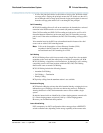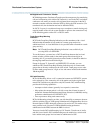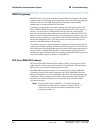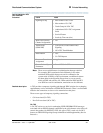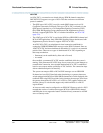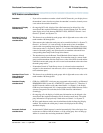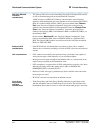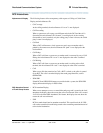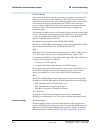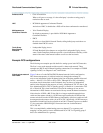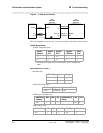
Distributed Communications System
323
Administration for Network Connectivity
555-233-504 — Issue 1 — April 2000 CID: 77730
B Private Networking
DCS feature considerations
Attendant • If you call an attendant on another switch in the DCS network, your display shows
the attendant’s name, but does not show the attendant’s extension, instead you see
a zero where the extension should be.
Alphanumeric Display
considerations
• On outgoing DCS calls, display of the called name may be delayed for a few
seconds until the required information arrives from the distant node. The called
name display only works between DEFINITY ECS, DEFINITY Generic 1 and
Generic 3 Systems, and System 75s.
Attendant Control of
Trunk Group Access
considerations
• This feature is not available for trunk groups with 4-digit trunk access codes or for
trunk members 100 through 999.
• If the remote node (where the trunk group to be controlled resides) is a System 75,
Generic 1, or Generic 3, it is not necessary for that node to have an attendant
console with corresponding three-lamp Trunk Hundreds Select button. However,
if the remote node is a System 85, Generic 2.1, or Enhanced DIMENSION PBX,
control of the trunk group is not allowed unless an attendant at that node has a
corresponding three-lamp Trunk Group Select button.
• The attendant must use the Remote Trunk Hundreds Select button to directly
access the controlled remote trunk group. If an attendant controls a remote trunk
group, and that attendant dials the trunk access codes of the DCS tie trunk and the
controlled remote trunk group, the call is routed to the attendant at the node where
the trunk group resides.
• If Attendant Control of Trunk Group Access is activated, and no attendant is
assigned, or the attendant is later removed, calls to a controlled trunk group route
to the attendant queue.
Attendant Direct Trunk
Group Selection
considerations
• This feature is not available for trunk groups with 4-digit trunk access codes or for
trunk members 100 through 999.
Attendant Display
considerations
• CORs for a DEFINITY switch may not correspond to those used by an Enhanced
DIMENSION PBX, System 85, or DEFINITY system Generic 2.1. Therefore, if
the DCS network contains nodes other than Generic 1 or Generic 3, the display
CORs may be misinterpreted. If it is important that certain CORs between various
systems correspond with each other, those CORs should be administered
accordingly.
• On outgoing calls, the display of called party information may be delayed a few
seconds until the required information arrives from the remote node. The called
party information is displayed only if both nodes are Generic 1 or System 75.
• DCS tie trunks between nodes must be administered with the Outgoing Display
enabled. This enables the called party’s name to be displayed at the calling
attendant’s display.
Automatic Callback
considerations
• An Automatic Callback request is canceled automatically if the called party does
not become available within 40 minutes, or if the calling party does not hang up
within six seconds after activating Automatic Callback.





